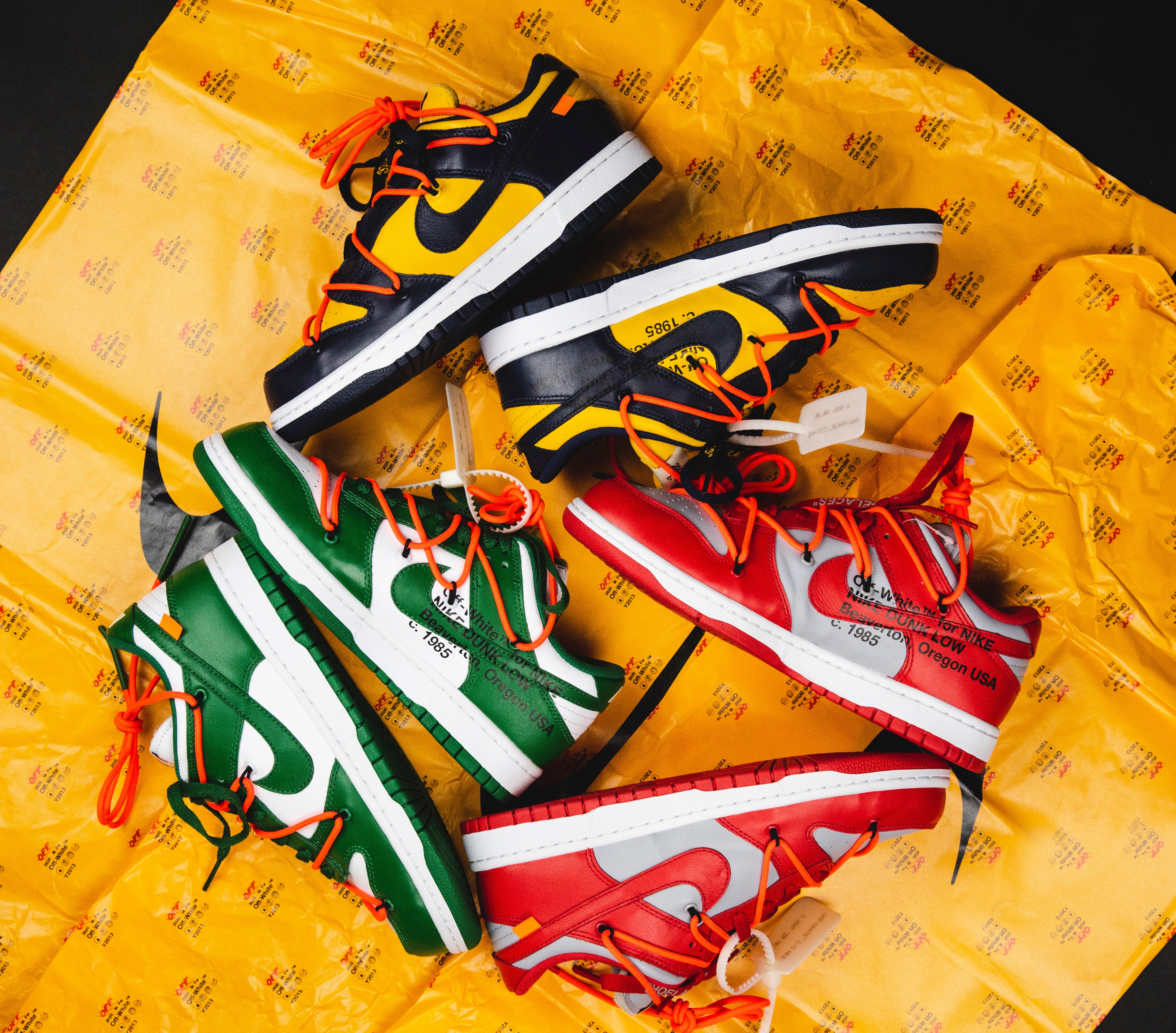1990
Sergio Lozano was a trained industrial designer who started his career at Nike in the 90s. He was tasked with carrying on the Air Max line af-ter legendary designer Tinker Hatfield started to focus on Nike’s Jor-dan line following the Swooshs unprecedented success with basketball sneakers. Nike needed another game changer in the running world, as the category the brand had made their name under fell far behind its basketball counterpart.
Air Max 95

1994/1995
Nike brings on board Nike ACG designer Sergio Lozano to spearhead the project whose four-year experience with tennis and training shoes would bring a fresh perspective to the Air Max family. He recalls, “One of our goals was to take our top level running product, which was Air Max, and really reinvent it to make a statement and take it to a new level.” Lozano also recalls wise words from Hatfield, “I remem-bered something Tinker Hatfield used to always bring up while work-ing on other projects, he would say, “Okay, so that’s a great design, but what’s your story?” Unlike years earlier, in the early 90s, when Tinker pushed design to take risks with the AM1 and was almost fired for do-ing so, the running design team at Nike urged Sergio, “Everyone around me kept saying, ‘just go have fun,’ said Lozano. “I was still young and a bit naïve, in a good way, and that was all I needed to hear.” Inspiration for the Air Max 95 came to him one rainy day in Ni-ke headquarters’ home of Beaverton, Oregon; while looking across the lake out into the trees, he began to picture the process of rain eroding the earth and thought it would be interesting if the perfect product was found underground, unearthed by erosion. “From that thought I made a little sketch of a shoe that had striations very similar to what you see on the walls of the Grand Canyon,” said Lozano “Layer after layer af-ter layer that are slowly revealed over time. I quickly finished the sketch and stuck it into my idea drawer.”

Original Air Max 95 sketch, April 3rd 1995.
The first Air Max 95 sketch did not feature the Swoosh logo at all. Eventually it came to incorporate the minimal branding as a small ac-cent, with an unconventional placement that could not distract atten-tion from the undulating lines of the upper. “From the design to the colour to the little Swoosh, it all caused controversy. I had initially de-signed the shoe without a Swoosh because we believed the design was aesthetically strong… so we positioned it as a signature, a sign off on the shoe.” Said Sergio.

The idea of layers resonated once more when Lozano took further in-spiration from the anatomy of the human body, with a lacing system inspired by a set of ribs, a spine-inspired outsole and a mesh and suede upper representing muscle fibres. This bold inspiration called for a layered upper construction with synthetic suede, stitched and compres-sion moulded for maximum support without bagging out over time. The Air Max 95 was originally imagined for larger, more powerful runners pounding the pavement and demanding maximum cushioning, with a key feature on the silhouette being its visible “Air” unit in the forefoot as well as the heel – the first time a sneaker featured even more “Air”.

Mesh overlays provided breathability throughout the entire top of the foot, along with the AM95’s “Speed-Lacing” eyelets, designed to wrap the wearer’s foot from top to sockliner. The shoe’s colours proved just as iconic as its design inspiration. First released in grey hues paired with bright yellow accents – despite controversy within Nike as many believed the colourway would not sell – the Air Max 95 wasn’t the first runner to employ a neon hue according to Lozano. “The neon yellow was not new. It was obviously part of our colour palette. It was also part of our heritage, you know? It’s part of Nike racing heritage.” The choice of colours also provided maximum contrast to highlight key design functions. “Let’s use colour to emphasise the technology and some of the functional things we’re trying to do with the shoe”, Lozano recalled. A first-of-its-kind black midsole also helped to mask dirt after runs.

1995
The Nike Air Max 95 changed footwear with forefoot Max Air cush-ioning and a human anatomy-inspired design unlike any sneaker be-fore. With its unique colourway, Swoosh placement, and dual air-powered cushioning system, the unapologetically brash Air Max 95 quickly progressed into a youth culture icon. This was especially no-ticeable throughout Europe and Australia. A smaller following in America includes much of the hip-hop community, with artists like Gucci Mane and Danny Brown having dropped bars about the sneaker. “I’ll kill you if you try me for my Air Max 95s,” rapped The Game in “Hate It Or Love It” as a direct reference to the Bloods adopting the Air Max 95 as their signature shoe, while the Crips had the Air Max 98s.

“Storytelling was, and still is a really important part of what we do. I have always been intrigued by how the body works, how it all comes together and how its created. It was trying to then use the language, the analogy of the anatomy and then paint that on the shoe.” – Sergio Lozano.


